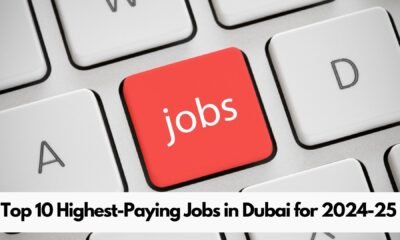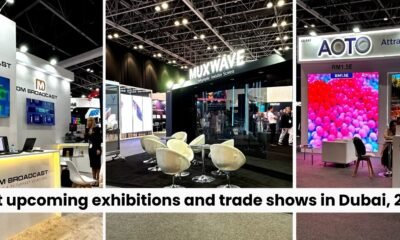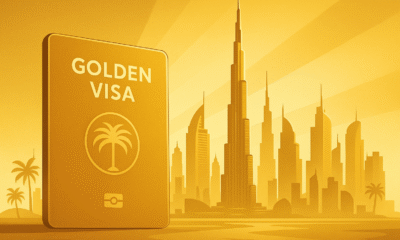Blog
How Do Exhibition Stand Builders in Oman Create Award-Winning Booths?
Introduction to Exhibition Stand Building in Oman
Creating a memorable presence at trade shows and exhibitions requires more than just a simple display. In Oman, the demand for high‑quality, customized exhibition spaces has grown alongside the nation’s expanding business sectors. Companies that specialize in constructing and designing these environments focus on translating brand identity into tangible experiences that attract visitors and encourage interaction. Understanding the local market, cultural nuances, and logistical considerations is essential for delivering a stand that not only looks impressive but also functions efficiently throughout the event.
Key Considerations When Selecting a Provider
When businesses begin the search for a reliable partner, several factors come into play. First, the provider’s portfolio should demonstrate a range of styles, from minimalist kiosks to elaborate multi‑level structures. Second, the ability to manage the entire process-from concept sketches to on‑site installation-can reduce coordination headaches. Third, knowledge of local regulations, such as fire safety standards and venue‑specific guidelines, ensures compliance and avoids last‑minute complications.
Assessing Experience and Reputation
Prospective clients often look for evidence of long‑standing experience in the industry. A company that has consistently delivered projects across various sectors-technology, hospitality, manufacturing-shows adaptability and a deep understanding of diverse brand requirements. Testimonials, case studies, and awards can serve as reliable indicators of quality and professionalism.
Evaluating Material Choices and Sustainability
Material selection influences both aesthetics and durability. Lightweight aluminum frames, modular panel systems, and high‑resolution graphics are common choices that balance visual impact with ease of transport. Increasingly, clients are interested in sustainable solutions, such as recyclable components and energy‑efficient lighting, which align with global environmental goals and enhance brand perception.
Design Process and Creative Collaboration
The journey from an initial brief to a finished stand involves several collaborative stages. Early consultations focus on brand messaging, target audience, and the specific objectives of the exhibition. Designers then develop concept sketches, which evolve into detailed 3D renderings. Throughout this phase, feedback loops ensure that the final design reflects the client’s vision while incorporating practical considerations like space constraints and visitor flow.
Concept Development
During concept development, designers explore various themes, color palettes, and spatial arrangements. Mood boards and material samples help clients visualize the tactile and visual aspects of the proposed stand. This stage also addresses technical requirements such as electrical load, audiovisual equipment, and structural stability.
Technical Planning and Engineering
Once the concept is approved, engineers create precise technical drawings that outline dimensions, load‑bearing calculations, and assembly sequences. These documents are crucial for ensuring that the stand can be safely erected and dismantled within the tight timelines typical of major exhibitions.
Project Management and Logistics
Effective project management is the backbone of a successful exhibition build. Coordination involves scheduling deliveries, arranging transportation, and overseeing on‑site installation. Experienced teams often employ dedicated project managers who act as single points of contact, streamlining communication between the client, designers, fabricators, and venue staff.
Transportation and Storage Solutions
Transportation logistics can be complex, especially when dealing with large or intricate structures. Providers typically offer modular designs that can be disassembled into compact packages, reducing shipping costs and simplifying customs procedures. Some companies also provide temporary storage facilities for reusable components, allowing clients to reuse stands at future events.
On‑Site Installation and Support
Installation teams arrive well before the exhibition opens to assemble the stand according to the engineering plans. They conduct final checks, test lighting and multimedia equipment, and ensure that all safety measures are in place. Ongoing on‑site support during the event addresses any technical issues that may arise, maintaining a seamless experience for both the exhibitor and visitors.
Choosing the Right Partner for Your Exhibition Needs
Identifying a partner that aligns with specific project goals can make a significant difference in the overall outcome. Companies that specialize in creating immersive environments often have a deep understanding of visitor psychology, enabling them to design layouts that encourage engagement and dwell time. Moreover, a partner that offers end‑to‑end services-design, fabrication, logistics, and installation-provides a streamlined experience that reduces the risk of miscommunication.
Specialized Services and Value‑Added Offerings
Beyond the core construction and design services, many providers offer additional capabilities such as interactive technology integration, custom furniture design, and branded giveaways. These value‑added services can enhance the overall impact of the stand and provide memorable touchpoints for attendees.
Cost Management and Budget Transparency
Transparent pricing structures help clients plan their budgets effectively. Detailed quotations that break down material costs, labor, transportation, and ancillary services enable informed decision‑making. While price is an important factor, it should be weighed against the quality of materials, craftsmanship, and the provider’s track record.
Industry Trends Shaping Exhibition Stands in Oman
The exhibition landscape is continuously evolving, driven by technological advancements and shifting audience expectations. Current trends include the incorporation of augmented reality (AR) experiences, modular designs that can be reconfigured for different events, and eco‑friendly construction methods. Staying abreast of these trends allows exhibitors to create stands that feel contemporary and resonate with modern audiences.
Integration of Digital and Physical Elements
Hybrid experiences that blend physical displays with digital interactivity are gaining popularity. Touchscreen kiosks, QR code‑enabled product information, and live social media feeds create dynamic environments that encourage visitors to engage both on‑site and online.
Modular and Reusable Structures
Modular systems offer flexibility, allowing exhibitors to adapt their stand size and layout for various venues without the need for entirely new builds. Reusability also supports sustainability goals and reduces long‑term costs.
Local Expertise and Cultural Sensitivity
In Oman, cultural considerations play a vital role in the design and execution of exhibition stands. Respect for local customs, appropriate use of colors and symbols, and sensitivity to regional business etiquette contribute to a positive reception. Providers with a strong local presence are better equipped to navigate these nuances, ensuring that the stand aligns with both brand objectives and cultural expectations.
Understanding Regional Preferences
Omani audiences often appreciate designs that incorporate subtle references to heritage, such as traditional patterns or locally sourced materials. Balancing modern branding with these elements can create a compelling narrative that resonates with visitors.
Compliance with Local Regulations
Adhering to venue‑specific rules, including fire safety standards and structural guidelines, is essential for a smooth installation process. Experienced providers maintain up‑to‑date knowledge of these requirements, preventing delays and ensuring a safe environment for all participants.
Case Study: Successful Exhibition Projects
Several recent exhibitions in Muscat and other Omani cities have showcased the impact of well‑executed stand designs. One technology firm partnered with a leading Exhibition stand builders in Oman to develop a futuristic booth featuring interactive product demos and immersive lighting. The project was completed within a tight schedule, and the client reported increased visitor engagement and positive brand perception.
Another example involved a hospitality brand that collaborated with an Exhibition stand contractors in Oman to create a lounge‑style environment that highlighted their new services. The design incorporated sustainable materials and localized artwork, resulting in a stand that received commendations for both aesthetics and cultural relevance.
Selecting a Partner for Design Excellence
For businesses seeking a creative edge, partnering with a specialized Exhibition stand design company in Oman can provide access to innovative concepts and cutting‑edge technologies. These firms often employ multidisciplinary teams that blend graphic design, architecture, and engineering expertise to deliver cohesive and striking exhibition experiences.
Finding a Reliable Booth Builder
When the focus is on flawless construction and timely delivery, an experienced Exhibition booth design company in Oman can oversee the entire fabrication process. Their workshops are equipped with advanced machinery that ensures precision cutting, printing, and assembly, resulting in high‑quality finishes that meet exact specifications.
Comprehensive Booth Construction Services
Clients who prioritize a turnkey solution often turn to a dedicated Exhibition booth builder in Oman. These providers manage everything from initial concept to final dismantling, offering peace of mind and allowing exhibitors to concentrate on their core business objectives during the event.
Conclusion
The landscape of exhibition stand building in Oman continues to evolve, driven by creativity, technology, and a deep respect for local culture. By selecting partners that combine design expertise, engineering precision, and logistical proficiency, businesses can create compelling exhibition experiences that leave lasting impressions. For those interested in exploring further resources and examples of outstanding work, Stands Bay offers valuable insights into the industry’s best practices.
Blog
Looking for a GCS Crypto Currency Licence and Registration in Dubai?

Looking for a GCS Crypto Currency Licence and Registration in Dubai?
Welcome to our guide on Crypto currency license in Dubai. At GCS, we specialize in providing top-quality Crypto currency license services to meet your needs.
Why Choose Our Crypto currency license Services?
Our team of experienced professionals understands the importance of quality Crypto currency license in Dubai. We pride ourselves on delivering exceptional results and customer satisfaction.
Our Approach to Crypto currency license
We take a comprehensive approach to Crypto currency license, ensuring that every aspect of our service meets the highest standards. Our process includes:
- Thorough consultation to understand your specific needs
- Customized solutions tailored to your situation
- Ongoing support throughout the process
- Transparent communication at every step
Important Resources
For more information about Crypto currency license, check out these valuable resources:
- Crypto Currency Licence in Dubai
- Dubai Crypto Currency Licence
- Crypto Currency Registration in Dubai
- Dubai Crypto Currency Registration
- GCS Crypto Currency Licence in Dubai
Get Started Today
Ready to experience the difference our Crypto currency license services can make? Contact GCS today to schedule your consultation. Our team is standing by to answer your questions and help you get started on the path to success.
Don’t wait – reach out to us today and discover why so many people in Dubai trust GCS for their Crypto currency license needs.
Blog
Best Crypto currency license Services in Dubai

Best Crypto currency license Services in Dubai
Welcome to our guide on Crypto currency license in Dubai. At GCS, we specialize in providing top-quality Crypto currency license services to meet your needs.
Why Choose Our Crypto currency license Services?
Our team of experienced professionals understands the importance of quality Crypto currency license in Dubai. We pride ourselves on delivering exceptional results and customer satisfaction.
Our Approach to Crypto currency license
We take a comprehensive approach to Crypto currency license, ensuring that every aspect of our service meets the highest standards. Our process includes:
- Thorough consultation to understand your specific needs
- Customized solutions tailored to your situation
- Ongoing support throughout the process
- Transparent communication at every step
Important Resources
For more information about Crypto currency license, check out these valuable resources:
- Crypto Currency Licence in Dubai
- Dubai Crypto Currency Licence
- Crypto Currency Registration in Dubai
- Dubai Crypto Currency Registration
- GCS Crypto Currency Licence in Dubai
Get Started Today
Ready to experience the difference our Crypto currency license services can make? Contact GCS today to schedule your consultation. Our team is standing by to answer your questions and help you get started on the path to success.
Don’t wait – reach out to us today and discover why so many people in Dubai trust GCS for their Crypto currency license needs.
Blog
Dubai 2025: The Tech Revolution Unveiled – From Smart Cities to AI‑Driven Innovation
Dubai has always been a city that looks toward the future. From its iconic skyline to its ambitious plans for sustainability, the spirit of innovation is woven into every project. In 2025, the city is stepping into a new era where technology is not just a tool but a living system that powers everyday life, reshaping how residents work, travel, shop and connect.
1. The Birth of a Smart City
When most people think of a smart city, images of connected traffic lights, billboards that update in real time, and drones delivering packages come to mind. Dubai’s journey began with the Smart Dubai programme, which set out to create a city where digital services are delivered more efficiently and transparently. The programme’s core goals were:
- Digital identity for citizens and residents.
- Integrated data platform for city services.
- Smart infrastructure that adapts to real‑time needs.
- Encouragement of start‑ups and tech investment.
These pillars laid the groundwork for a city that can react to the needs of its people instantly, making daily life smoother and more rewarding. This foundation also helped launch a wave of projects that pushed Dubai ahead of the global curve.
2. Artificial Intelligence Takes the Driver’s Seat
Artificial Intelligence (AI) has become the engine behind many of Dubai’s newest achievements. From predictive policing that helps keep streets safe to AI‑powered logistics that reduce delivery times, the technology is changing every sector.
Transportation and Mobility
The Dubai Metro’s robots now run maintenance checks without human intervention. Autonomous buses navigate the sidewalks, delivering passengers between business districts with minimal delays.
Healthcare Revolution
AI algorithms predict potential health risks based on lifestyle and genetic data, allowing doctors to intervene early. Virtual consultations powered by AI chatbots provide instant medical advice, freeing up specialists for complex cases.
Public Safety and Law Enforcement
Machine‑learning models detect unusual crowd movements and highlight potential security threats before they grow. Law‑enforcement drones patrol the city, ensuring that emergency response is swift and efficient.
By embedding AI into everyday services, Dubai turns its metropolis into a responsive organism that learns and grows with its people.
3. Blockchain: The Invisible Ledger of Modern Life
While blockchain has made headlines in finance, its real power lies in its transparency and security. Dubai has leveraged the technology to create tamper‑proof systems across government, healthcare, and logistics.
One notable example is the Digital Health Pass—an immutable record that tracks vaccination, medical history, and health alerts. Similarly, property transactions are recorded on a blockchain, cutting down paperwork and fraud while speeding up closing times.
These applications not only add value for the government but also provide a sense of trust for residents and investors alike.
4. The Architecture of Tomorrow: Smart Skyscrapers and Infrastructure
Dubai’s skyline is home to more than just office space; it is a living laboratory for sustainable design. Buildings now incorporate:
- Energy Harvesting Windows: Transparent solar panels that provide electricity to the building’s systems.
- Responsive Facades: Skin that adjusts to sunlight and temperature, keeping interiors comfortable while lowering energy usage.
- Water Recycling Systems: On‑site purification that reduces municipal water demand.
These features not only reduce carbon footprints but also lower operational costs, making high‑rise living accessible to a wider audience.
5. Technology Hubs and the Start‑up Ecosystem
The city’s growth is driven partly by its vibrant ecosystem for technology start‑ups. Numerous incubators provide mentorship, financing, and access to venture capital. Key areas of focus include:
- FinTech solutions simplifying banking for the cloud‑native generation.
- EdTech platforms that bring personalized learning to anyone on the move.
- HealthTech that integrates wearable data with AI diagnostics.
- Supply chain technology creating end‑to‑end traceability.
Dubai’s open data initiatives give start‑ups a wealth of information—making it easier to test and scale products that fit the local market and can also export worldwide.
6. The Human Touch: Building Tech Culture
Innovation is only as good as the people behind it. Dubai invests heavily in human capital: from schools teaching coding from kindergarten to higher‑education programmes that put AI and blockchain at the forefront.
Workshops lead residents to create their own mini‑projects, giving them a sense of ownership over the urban digital narrative. These efforts foster a public appetite for technology, ensuring that the next wave of ideas will come from diverse voices.
7. Looking Ahead: What Lies Beyond 2025?
The ambition never stops. While 2025 has delivered massive strides, the sights are now set on a more interconnected yet sustainable system.
- Zero‑carbon buildings enabled by nanomaterials.
- Hyper‑fast transport links into the desert, turning islands into bustling hubs.
- Advanced AI that helps residents live healthier lifestyles by predicting needs.
- Fully autonomous commercial districts where order and efficiency thrive.
These future projects are based on data collected in real time, meaning the city can adapt quickly to changing aspirations.
Dubai’s transformation demonstrates how creating a digital ecosystem, backed by supportive policy, can accelerate progress for all residents and set a global example for future city planning.
Want to read more about how Dubai is turning skyscrapers into AI hubs? Explore our story on skyscraper AI transformation.
Curious how the city’s smart system uses AI and blockchain to improve everyday life? Dive into the pulse of Dubai’s tech evolution.
Still wondering how visionary dreams turned into a reality of smart cities and AI? Discover the journey of Dubai’s tech pulse.
-

 Business2 years ago
Business2 years agoTop 10 Highest-Paying Jobs in Dubai for 2024-25
-

 Business2 years ago
Business2 years agoTop 10 Business Opportunities in Dubai for 2024-2025
-

 Business2 years ago
Business2 years agoBest upcoming exhibitions and trade shows in Dubai, 2024
-

 Business1 year ago
Business1 year agoHow Much Does It Cost to Open a Company in Dubai in 2024?
-

 Sports2 years ago
Sports2 years agoTop 5 Upcoming International Sporting Events in Dubai (2024-2025)
-

 Blog2 years ago
Blog2 years agoPlaces to Visit in Ras Al Khaimah
-

 Latest4 months ago
Latest4 months agoDubai Golden Visa 2025: Everything You Need to Know About Eligibility, Benefits and Application Process
-

 Business2 years ago
Business2 years agoTop 5 Networking Events for Businesses in Dubai in 2024



